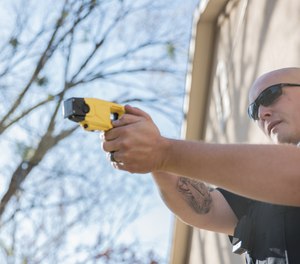Although this is not often relayed to the general public, statistical data indicates that the use of force by police is highly infrequent when compared to the number of contacts police have with members of the community. And incidents in which police use deadly force are rare. Despite this, the law enforcement community is committed to even better performance in use of force encounters.
Even though police have an overwhelmingly positive record in the use of force arena, many law enforcement officers do not have as deep an understanding of use of force as they should.
The truth is, in most agencies, there are a small number of "use of force" specialists. In addition, while many officers are competent in using force they could certainly stand to improve their skill set, knowledge and overall understanding of force options. In this article, I suggest that we can advance this effort simply by evaluating the terminology we use to teach and explain police use of force.

"Use of force continuum"
The term I specifically would like to discuss is the "use of force continuum."
The term "continuum" is so often used to explain force options that it has become the most recognized way to describe law enforcement's use of force options by the general public. But is "continuum" the most accurate term to describe police response options to resistance? I would argue no.
A simple definition of continuum can be paraphrased as a sequence or progression of elements that vary slightly in perpetuity or over a defined section. An example of a defined continuum would be the temperature range between freezing and boiling.
Use of force options by police officers do have variations in the degree of risk of injury, and officers and the public need to understand these differences. But, there is no smooth and sequential difference in use of force options.
For example, the difference between a verbal order and an empty hand control technique is not the same as the difference between the deployment of pepper spray and the firing of a handgun. Each force option available to an officer carries degrees of risk specific to the option being used. While there are undoubtedly general differences among the force options, there simply is not a continuum of slightly varying degrees.
Use of force is not a step-by-step process
The biggest problem with defining the use of force options as a continuum is how a continuum is designed.
Continuums are configured so that the natural way to move through them is through a step-by-step progression in either an ascending or descending manner. But the rapidly evolving nature of police use of force is such that an officer seldom moves up and down the force options in sequential order. Quite often, a use of force incident can go from addressing a passive threat to a deadly force encounter in fractions of a second.
Although use of force instructors explain that officers can move about the use of force continuum in any objectively reasonable order, it is still difficult for many to understand that force options are in no way sequential. They merely exist as options, and the subject's actions determine which type of force is required.
Use of force model
There are some parallels between a continuum and the types of resistance and force an officer can use. It makes sense that use of force trainers need to give officers some way to understand under what circumstances a certain type of force should be considered.
My suggestion is to use the term "use of force model." On one side of the model are the potential categories of force an officer may use to stop a threat or lawfully control a subject. This could include empty hand techniques, deadly force, less than lethal tools, verbal directions, etc., listed in no specific order. On the other side of the model are types of resistance an officer may encounter, including deadly threat, passive resistance, active aggression and any other kind of resistance an agency may categorize. By removing the sequential order within the model, an officer can then examine each force option available to them and determine under which circumstances that type of force would be objectively reasonable.
This will create a deeper understanding of force options and create discussions and scenarios in which these options can be used. This would also eliminate the confusion of why the officer did not "exhaust lesser levels of force" or use a "minimal force option." These terms create further confusion and ignite debates that are neither realistic nor fair to the officer.
I am not the first to question the accuracy of the term "continuum" regarding police use of force. Others have made this argument for many of the same reasons I have discussed. I would specifically like to thank my first use of force instructor, Colonel Dale Reed of the Johnson County (Kansas) Sheriff's Office, who was the first person to introduce me to the use of force model concept decades ago. Using a use of force model has deepened my understanding of force options to a degree that would not have been possible had I viewed the use of force in terms of a continuum. I am sure there are many officers out there who will find the same result.
Train hard and be safe!
NEXT: How two modes of decision-making influence deadly force encounters
"use" - Google News
March 24, 2022 at 03:18AM
https://ift.tt/xZVEkXh
Why police should stop using the term 'use of force continuum' - Police News
"use" - Google News
https://ift.tt/bO4a1rg
https://ift.tt/tuomywT
Bagikan Berita Ini














0 Response to "Why police should stop using the term 'use of force continuum' - Police News"
Post a Comment